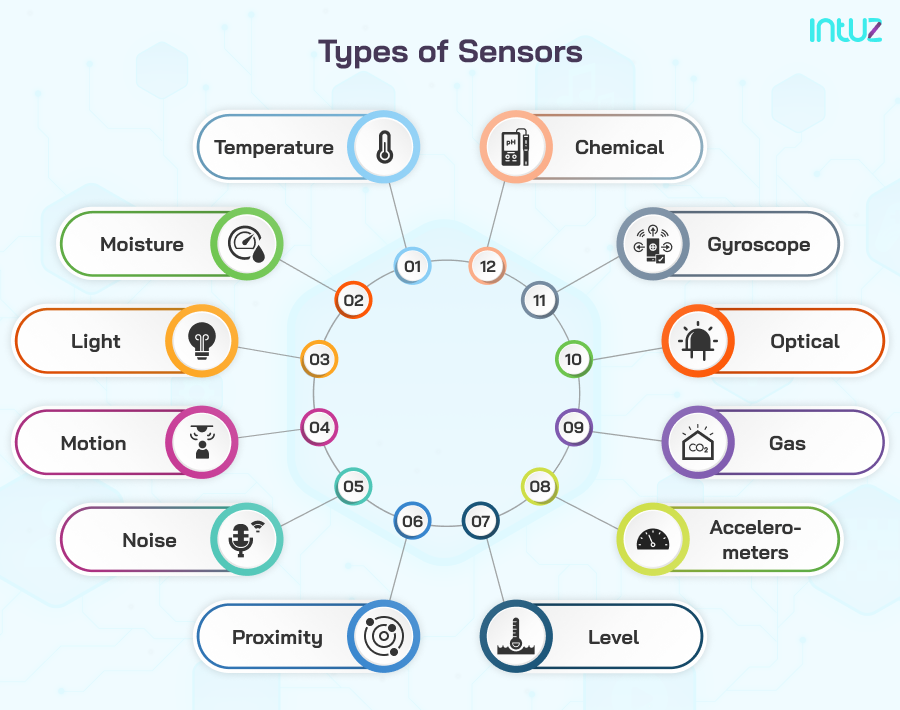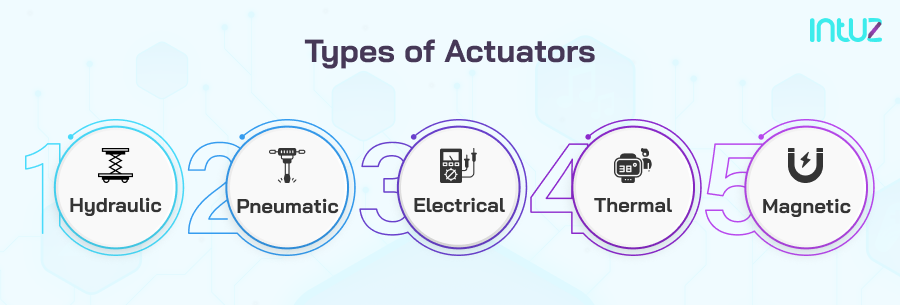Type of Sensors and Actuators in IoT
From enabling digital transformation to setting up automation systems, the Internet of Things is applicable in every industry.
Join the DZone community and get the full member experience.
Join For FreeUsing IoT-based technologies, companies can effectuate high-performance workplaces, gain better access to data, interpret it, and implement bespoke strategies leading to sustainable growth.
While these are the core benefits of an IoT-based system, implementing the same requires adding sensors and actuators to the entire system.
With these peripherals and their firmware, IoT is considered one of the key components of Industry 4.0. This is the industry phase where predicting problems, ensuring predictive maintenance, and implementing optimum workplace practices are the key drivers of growth and development.
Let’s find out how sensors and actuators play a role in building the required IoT infrastructure.
What Are Sensors?
Sensors or transducers represent physical devices that convert one form of energy into another. Sensors convert a physical device into an electrical impulse to take the desired action. For instance, sensors in an ambient light system will measure the brightness of the light by turning it into an electrical signal.
These sensors have a wide array of applications in the IoT network. As they obtain the parameters of a physical object, the output of their observation is converted into resistance, capacitance, impedance, etc.
What Are Actuators?
Taking the sensor discussion forward, actuators do the opposite of a sensor. They convert electrical impulses into physical actions or objects. In the light example, as the sensor is reading the brightness of the light by converting it into an electrical signal, an actuator takes action according to the desired setting. So here, it will decrease or increase the light brightness according to the set parameters.
We can leverage actuators to control and manage our devices in the IoT network according to the information sent by the sensors.
How Do Actuators and Sensors Connect in the IoT Network?
IoT-based Sensors and actuators are vital cogs in the connected technology realm. As IoT and Industrial IoT are gaining prominence, actuators and sensors help streamline operations making organizations more efficient, productive, accurate, and intelligent.
With the help of IoT software solutions, the actuators and sensors connect with each other. IoT Sensors are used to record and monitor processes plus the equipment by extracting data and information.
So they can collect a device’s performance data, analyze the output and provide recommendations. Actuators, on the other hand, are used to automate tasks in the workplace, saving human labor.
Both these components connect to build effective IoT solutions. In manufacturing, when a robot is working to paint a car or arrange pills, it is working with the information and actions provided by actuators and sensors.
Different types of sensors and actuators are used to implement the desired functions. Let’s find out about them.
Types of Sensors

1. Temperature: Beginning with the most common type of sensor, the temperate sensor records the amount of heat in a given setting. It can be a machine, a room, a car, a lab, etc. This information can be used to take the desired action, like changing the temperature to optimal settings. The same can be automated according to some specific environmental conditions and settings.
2. Moisture: Where temperature sensors record the heat, moisture sensors record the amount of humidity. They have a wide array of applications in the environment, food supply chains, medicinal labs, agriculture, etc. Moisture sensors either have a hair tension moisture element or a psychrometer to record the moisture content.
3. Light: Light sensors record and assess the ambient light settings in a defined area and recommend actions to change the same. In your smartphone, when the brightness is adjusted according to the exposure to light, the light sensor and the electrical actuator play their part. In the modern homes that have automated light settings, these sensors are used.
4. Motion: Motion sensors are usually installed in security systems and help detect unauthorized activity. Upon sensing activity either by changes in the heat or weight, the sensor activates an alarm system sending notifications to the right people. Motion IoT sensors use radar, infrared, or ultrasonic waves to detect activity in their vicinity.
5. Noise: Noise sensors, as the name suggests, record the noise levels in the given environment. It can be an entire city, a room, a car, etc. In IoT, these sensors are used to build safe working and living environments for people. They are also used to send warning notifications to the right people when noise levels go beyond the stipulated threshold limit.
6. Proximity: Motion sensors and proximity sensors can be kept in the same basket, as the majority of their functions are similar. These sensors record activity nearby with the help of electromagnetic waves, including infrared. They are used in cars, parking lots, retail stores, stadiums, airports, and in several other places to notify the people about their proximity to different components.
7. Level: From granular materials to semi-solid liquids, level sensors detect the quantity or level of different substances. Manufacturing industries, particularly beverage, water treatment, and waste management organizations, have the best use of level sensors.
8. Accelerometers: Accelerometers are an impressive type of IoT sensor used to record and measure an object’s acceleration. These types of sensors record the rate of change of an object’s speed in relation to time. Plus, they have the added advantage of recording changes in gravity. They can be popularly used in driving fleets and smart pedometers or to detect movement in a stationary object, helping to identify theft.
9. Gas: Gas sensors are used to detect changes in air quality. These sensors are built to detect the presence of toxic, combustible, and other hazardous gasses in a given area. Most of the time, we see the installation of this type of sensor in mining, oil, gas, and energy organizations. However, they are also installed in smart homes and buildings to detect levels of CO2, carbon monoxide, particulate matter, etc.
10. Optical: Optical sensors have several use cases but have become an important part of driverless cars. These sensors are used to detect signals and signs to provide information about the surrounding environment. In a driverless car, these sensors are used to detect objects and signs on the road, send the signals to the central control unit and dictate a change in behavior if required.
11. Gyroscope: These sensors are used to measure the velocity of a moving object. Velocity refers to the speed and rotation of an object around its axis. Gyroscope sensors are commonly used in car navigation systems and in stability control systems.
12. Chemical: We can put chemical sensors and gas sensors in the same category. With these sensors, we can expect measurements and detection of several types of chemicals. To build IoT solutions in a factory setting, these sensors can play an important role in ensuring workers' safety and that of the environment.
Sensors measure and record the elements they are built to do based on their sensitivity, drift, linearity, resolution, range, precision, and accuracy. The IoT sensors built with these characteristics can provide accurate information.
Types of Actuators

1. Hydraulic: These actuators harness hydraulic power to perform mechanical functions and operations. Generally, these types of actuators are powered by a cylinder or a fluid motor. According to the requirements and recommendations, the mechanical motion is converted into oscillatory, linear, or rotary.
2. Pneumatic: Pneumatic actuators create two types of motions, rotary or linear. They are powered by a vacuum or compressed air at high pressure to implement the required type of motion. Compared to other types of actuators, pneumatic actuators are low-cost and low-maintenance actuators.
3. Electrical: In these actuators, a motor converts electrical energy into mechanical motion. These actuators are powered by electricity and provide precision control. These actuators are heavily used in industrial settings to automate mechanical operations.
4. Thermal: The thermal actuators have thermal-sensitive material fitted inside, which is used to produce linear motion. The word thermal implies that these actuators are used in response to temperature changes. The most popular use case includes shutting off valves and operating latches or switches.
5. Magnetic: These types of actuators convert electromagnetic energy into mechanical output and operate in a linear or rotary direction. Magnetic actuators can provide continuous mechanical operation and are popularly used in the automotive and aerospace industries.
Where IoT is shaping the new face of the industry, sensors and actuators are used to provide the required infrastructure for building a robust industry. They are essential in almost every industrial function helping organizations achieve streamlined output and higher productivity powered by automation.
The key to harnessing their potential is identifying the correct type of IoT sensors and installing them to manage and control mechanical operations.
Opinions expressed by DZone contributors are their own.

Comments